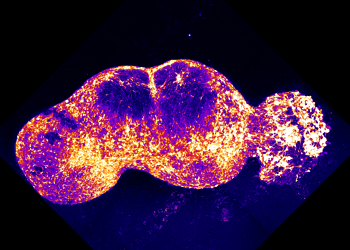Doing good for others may do us good in turn, a new paper suggests. Engaging in altruistic behavior without expecting something in return can lessen physical pain, it found.

Most people like doing good things for others. Altruistic behavior has been shown to trigger the release of neurotransmitters such as dopamine in the brain, which amplify nice cozy feelings. But the same chemicals can lessen our subjective perception of pain, a new paper reports.
Pain Less
“We find consistent behavioral and neural evidence that in physically threatening situations acting altruistically can relieve painful feelings in human performers,” the study explains.
The team carried out four experiments to see if engaging in altruistic behavior could alter the way people perceive pain. In the first experiment, they asked donors who gave blood after an earthquake to rate how painful the needle jab was to them. They also did this with volunteers who gave blood without a disaster having occurred recently (this acted as the control group). Those in the first group reported feeling less pain when jabbed with the needle, the team explains.
In the second experiment, the team asked participants to fill out some questionnaires while exposed to cold temperatures. Additionally, each participant could opt to help revise a handbook for migrant children with their questionnaire. Those that accepted formed the experimental group, while those that opted out of the revision task were placed in the control group. Both groups performed the same task, including the revision, but the control group was told that they were given regular counseling handbook (i.e. that the revision wasn’t altruistic in nature). The researchers report that those who volunteered for this task felt less discomfort associated with the cold than the participants who didn’t volunteer.
For the third experiment, the team asked cancer patients to report on their pain levels. Two groups were established: patients that cared (doing cooking, cleaning, etc.) only for themselves, and those that cared for others as well. The second group reported lower levels of pain overall, the study found.
In the final experiment, the team asked volunteers for donations to help orphans and asked those that did donate how much they thought their donation helped the cause. Each volunteer then underwent an MRI scan while receiving mild electrical shocks. Participants who donated showed a lower brain pain response than those who didn’t, and the more a volunteer thought that their donation helped, the lower this response.
The team explains that their findings suggest altruistic behavior not only makes you feel good but can also reduce our perception of pain.
“This reduced pain-induced activation in the right insula was mediated by the neural activity in the ventral medial prefrontal cortex (VMPFC), while the activation of the VMPFC was positively correlated with the performer’s experienced meaningfulness from his or her altruistic behavior,” the team concludes.
As for why this happens, the authors write that it’s probably one of the “psychological and biological mechanisms underlying human prosocial behavior”, meant to promote cooperation between individuals and cement social networks. However, it’s not all rainbows and roses: previous research has shown that altruism and punishment are two sides of the same coin, and are used liberally to enforce the prosocial behavior in individuals.
The paper “Altruistic behaviors relieve physical pain” has been published in the journal PNAS.






